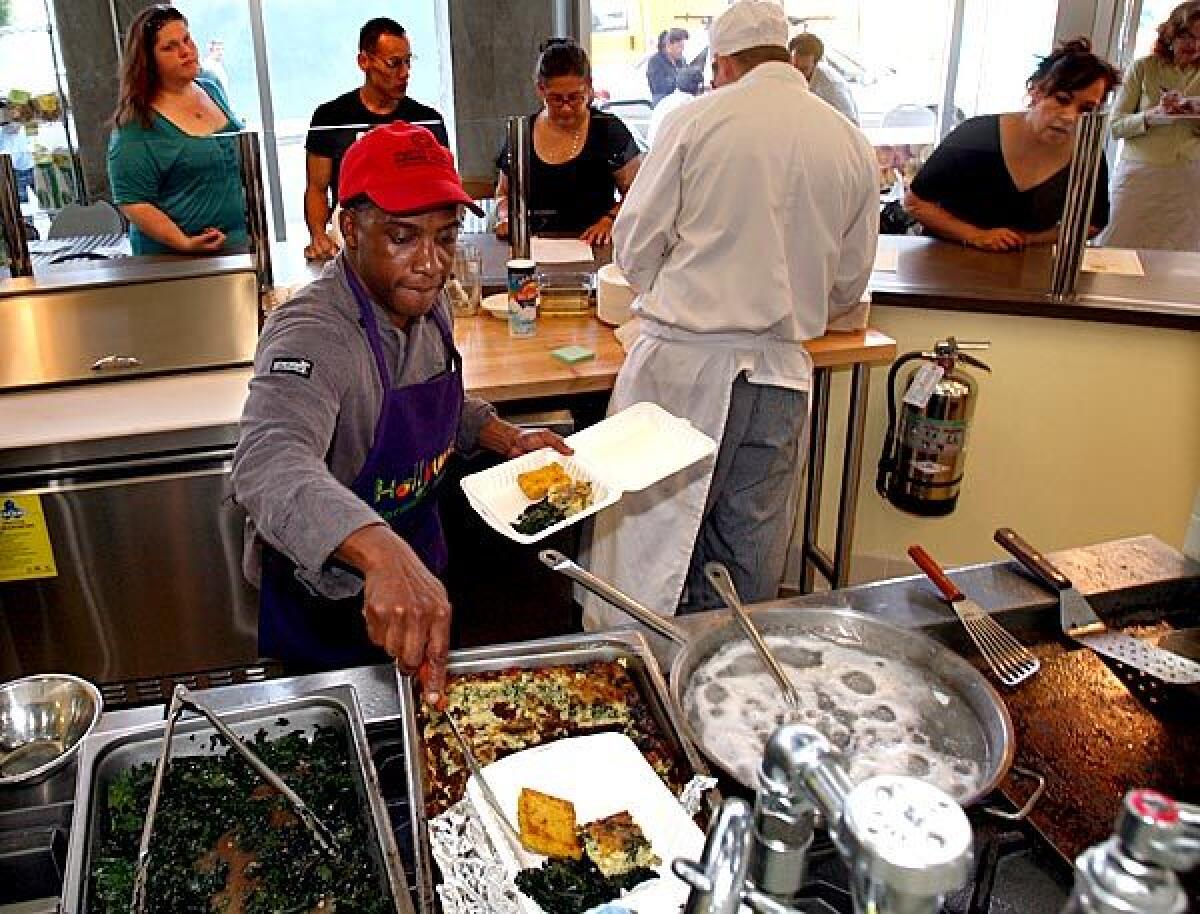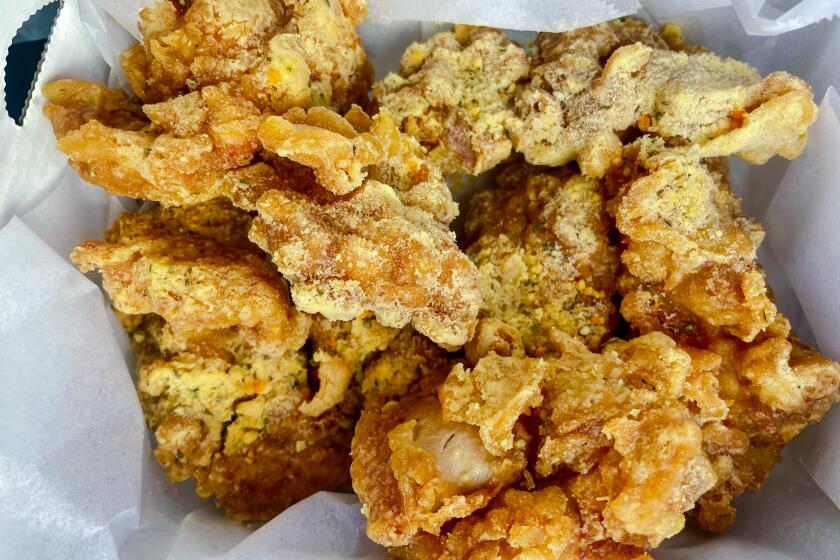The California Cook: For small farmers, thinking outside the markets

People can talk all they want about the important restaurants and the famous chefs that have gotten so much attention over the last 30 years, but for me the biggest change in that time has been the introduction of farmers markets.
They have had a revolutionary effect on the way food is grown and marketed in the United States. Still, at a most generous estimate, less than 2% of fruits and vegetables are actually sold at them. So how can they move beyond that?
Farmers markets have increased choice and improved the quality of fruits and vegetables for shoppers, and, perhaps most radically, they have provided farmers with a way to actually earn more money by selling food with flavor, as opposed to mainstream farmers who grow primarily for volume.
But what’s even more remarkable is that farmers markets have achieved all of that despite what has to be one of the most inefficient business plans ever devised. If you wanted to design a market from scratch, this almost certainly wouldn’t be the way you’d do it. Let’s see … it’ll be open for only four hours a week. If a customer can’t make it, they miss it. Let’s just stick the markets wherever we can. And if shoppers can’t find a parking spot, they miss it. For farmers, there’s the not inconsiderable matter of having to drive hundreds of miles every day to spend hours standing outside, weighing lettuce and making change.
There has to be an alternative.
The farmers market revolution may have been born in farmers markets, but if it is to continue, there will have to be other paths as well. Farmers markets as we know them now will always exist, at least I hope they will. But if we are going to continue to improve the opportunities for small farmers, and if we want to continue to improve shoppers’ access to great produce, we also need to look at alternatives, at other ways of achieving the same goals. These are not replacements for farmers markets but complements.
It would be nice to be able to offer the one surefire idea that is going to be the answer, but I don’t think anyone can do that. In fact, there probably isn’t one surefire answer. Instead, the solution will be in any of a dozen ideas that will find the right fit of time and place.
In fact, some of them are probably happening right now.
Maybe the answer will involve making farmers market produce more available to mainstream shoppers. I was shopping at my local supermarket a couple of summers ago and saw a plastic box of heirloom tomatoes that were branded Tutti Frutti Farms — a great farmers market grower. Actual farmers market produce at an actual supermarket. Whodathunk it?
Another is the success that citrus growers in the Ojai Valley have had with the national marketing of their terrific little Pixie mandarins. They’re shipped all over the country by traditional produce distributors, but because they have earned a reputation, the farmers are able to get much more than commodity prices for them.
Promoting locally grown produce has even become a marketing strategy for some supermarket chains, and in order to make that a reality, they’re bending corporate rules to allow individual farmers to deliver directly to stores rather than to central warehouses or middlemen. This saves a minimum of two or three days in transit, allowing later and riper harvesting.
There are other, less commercial possibilities. CSAs, or community-supported agriculture programs — you know, the ones where you sign up for a subscription and get a box of produce every week — are popular up north and are such a boon to small farmers economically, and now they finally seem to be catching on in Southern California. But maybe not. They’re a perfect example of the fact that an idea that works perfectly well in one place may not be right for another.
What about turning what are now floating street markets into permanent structures? The space that isn’t used by farmers on non-market days can be used for other local small businesses as well, turning the farmers market into a permanent hub for the whole community.
That leads to blends of farmers markets and more commercial enterprises, such as the Ferry Building in San Francisco and the Oxbow Market in Napa. These are essentially high-end food markets selling everything from coffee to culinary antiques, but they also offer space for farmers to bring in their produce on a daily or weekly basis.
Like I said, none of these ideas is perfect yet, but can’t you see a glimmer of possibility?
At the Hollywood farmers market, they’ve used grant money to build a commercial kitchen. Not only does it produce lunches based on farmers market produce, but it also serves as a development kitchen for farmers who are looking for secondary uses for produce — say someone wants to play with turning potatoes into chips, or fruit into jam. They also use it to teach classes that introduce the underprivileged to the benefits of farmers market produce and how to use it.
As long as we’re just tossing out wild ideas, how about connecting farmers markets with public transportation hubs? Today, most markets seem to be located where city planners want customers to go, not necessarily where the customers already are. What about setting up markets at MTA stops?
And instead of farmers markets being stationary, what about turning them into delivery trucks that will follow set routes? They already do this in my neighborhood, selling cheap fruits and vegetables from the downtown produce market. Why wouldn’t it work with high-quality stuff too?
The details of which, if any, of these will work will become clear, as they say, in the fullness of time. The real key, when it comes to thinking about how the farmers market movement might evolve over the next five or 10 years, is to focus on what made them great in the first place: the idea that great fruits and vegetables are grown only by great farmers.
Farmers markets changed American food by offering shoppers a reminder of what great farming can do, by reminding them what great fruits and vegetables taste like. As long as they can continue to do that, somehow, I trust, they will find a way.
This is adapted from the keynote speech at the 2010 California Small Farm Conference held in March in San Diego.
More to Read
Eat your way across L.A.
Get our weekly Tasting Notes newsletter for reviews, news and more.
You may occasionally receive promotional content from the Los Angeles Times.











